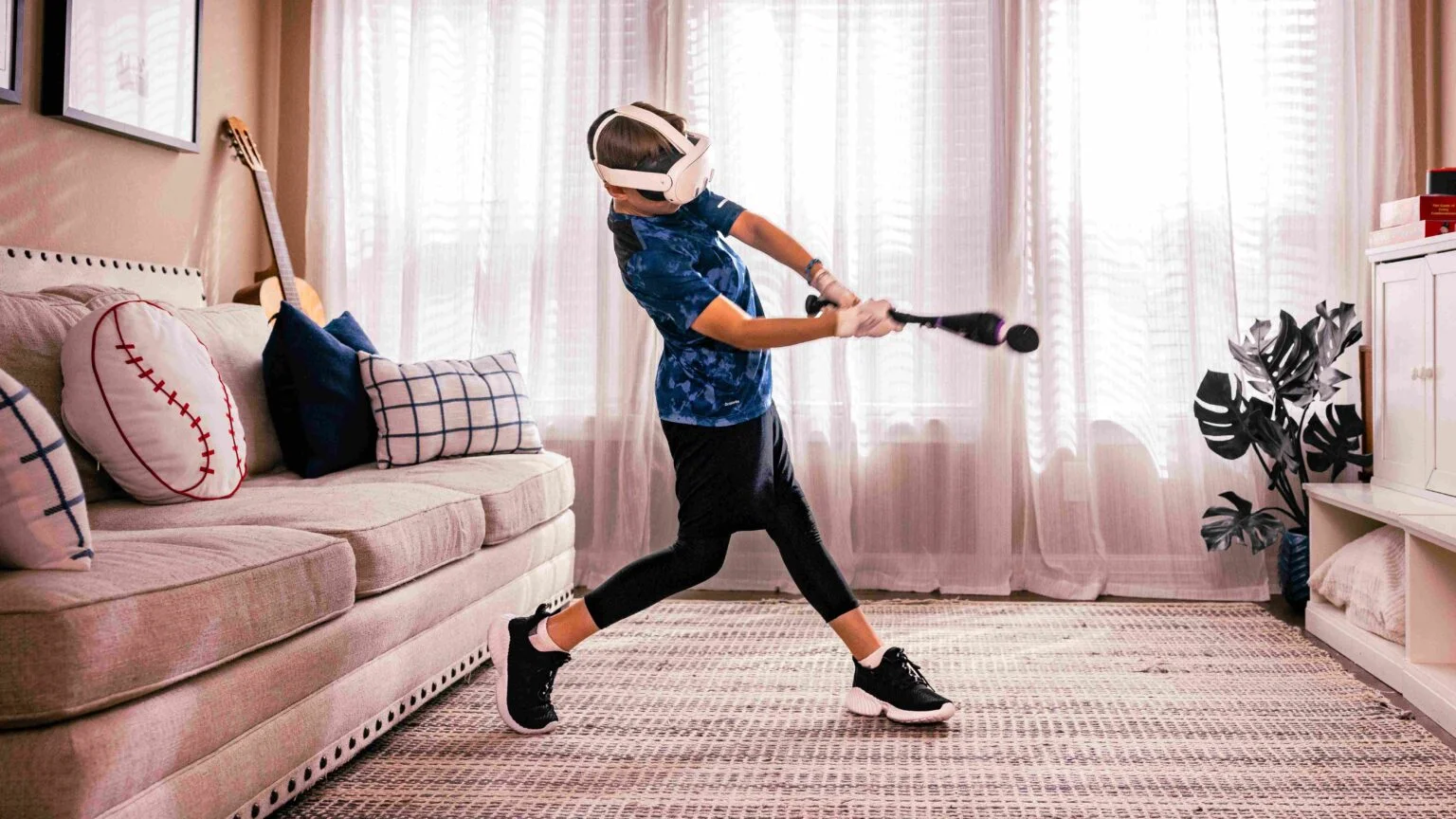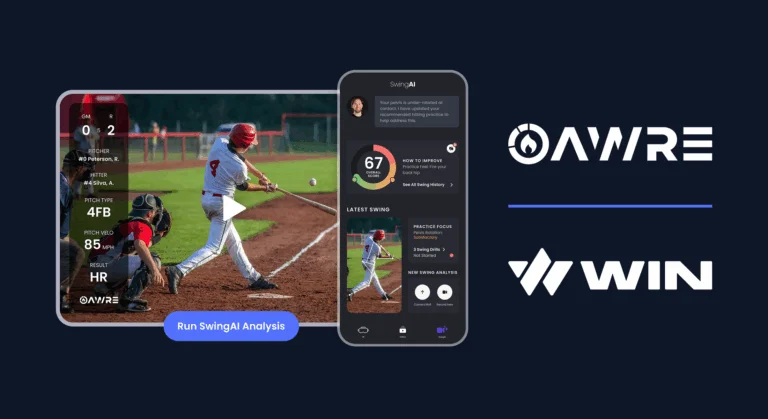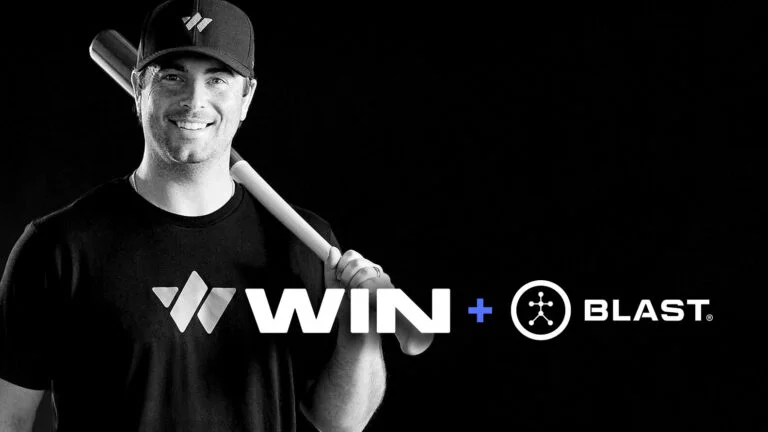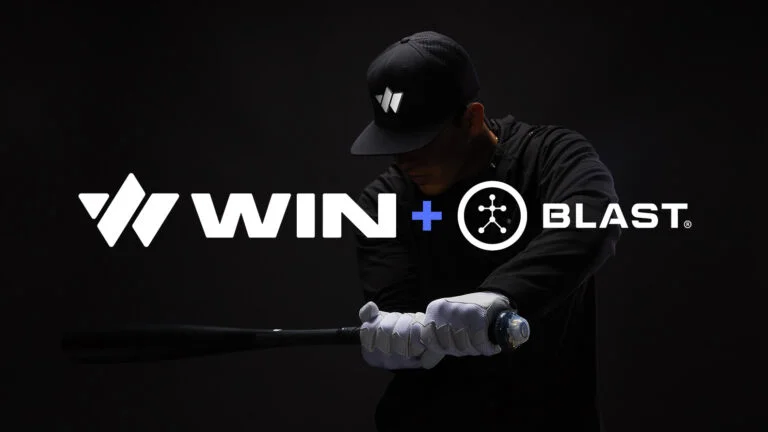For more experienced hitters, see here for the best drills for 7-8 year olds, here for 9-10 year olds, and here for 11-12 year olds. Click here for an overview of WIN Reality’s age-by-age curriculum.
Introducing baseball to young kids aged 5-6 is all about building a foundation of fundamental skills while keeping the experience fun and engaging. At this stage, it’s less about competition and more about creating a love for the game. The right youth baseball drills will help develop essential skills like hand-eye coordination, reaction time, and proper hitting mechanics.
The Short Answer: Our favorite hitting drills for 5-6 year olds include:
- Hitting Off Of The Tee
- Soft Toss
- Tennis Ball Reaction Drill
- Line Drive Competitions
- Skinny Bat
- Distance Competitions
- Short Bat Drills
These drills are easy to set up, fun, and designed to keep kids excited while improving their skills.
Hitting Skills for 5-6 Year Olds to Focus On
In the 5-6 age group, players are just starting to grasp the basics of baseball, so focusing on foundational baseball skills is crucial. Here are some of the key areas to prioritize:
1. Hand-Eye Coordination
Developing hand-eye coordination is an essential building block for young players. Drills that encourage tracking and making contact with the ball lay the groundwork for future hitting and fielding success. This important skill translates into both batting and fielding, making it a cornerstone for youth baseball.
2. Proper Swing Mechanics
Teaching young players basic fundamentals such as how to hold the bat, stand at home plate, and follow through with their swing sets them up for long-term success. Keep instructions simple, focusing on having a balanced stance and a smooth swing to make learning accessible and fun.
3. Bat-to-Ball Skills
Bat-to-ball skills are the ability to make consistent squared-up contact with the ball, a crucial foundation for young hitters. By practicing drills like soft toss or tee work, kids can improve their timing and bat path, setting the stage for more advanced hitting as they grow.
4. Reaction Time
Improving reaction time helps players anticipate pitches and react to the ball quickly during a game. Simple drills involving first step/move quickness, such as soft toss or tennis ball drops, help sharpen this skill in a way that feels more like play than practice.
5. Building Confidence
Confidence comes from repetition, success, and positive reinforcement. Drills that are age-appropriate and allow for small wins will make players feel accomplished and excited to keep learning.
6. Making Practice Fun
At this age, practice sessions need to feel more like playtime than a chore. Drills that include games, challenges, or races can make a significant difference in how engaged kids remain throughout their baseball journey. Think about how you fell in love with baseball as a kid, that is what you want to create for these kids also.
GET STARTED WITH WIN REALITYThe Best Hitting Drills for 5-6-Year-Olds
Here’s a look at seven fun and effective hitting drills for young players, complete with step-by-step instructions and their benefits:
1. Tee Drill
How to Do It:
- Set up a batting tee at home plate.
- Place a baseball or weighted ball on the tee.
- Have the player stand in a proper batting stance and take swings to hit the ball off the tee.
- Move the tee around to different positions of the plate (inside/outside and up/down).
Benefits: A staple of batting practice, this simple drill helps build proper contact points and hitting mechanics. It’s perfect for young kids just starting out and offers immediate feedback on their contact with the ball.
2. Soft Toss
How to Do It:
- Position the player at home plate in their batting stance.
- The coach or parent stands out front or to the side and lightly tosses a ball underhand into the strike zone.
- The player practices hitting the moving ball, focusing on timing and making solid contact.
Benefits: Soft toss improves hand-eye coordination and reaction time while introducing players to hitting a moving ball. It’s an excellent transition drill from tee ball to coach pitch.
3. Tennis Ball Reaction Drill
How to Do It:
- Stand about 10 feet away from the player.
- Hold a tennis ball and drop it unexpectedly.
- Have the player react quickly to catch the ball before it bounces twice.
Benefits: This fun drill sharpens reaction time and hand-eye coordination. The unpredictability keeps players engaged while helping them build quick reflexes. You can also modify the drill by rolling the ball to mimic fielding ground balls.
4. Line Drive Competition
How to Do It:
- Set up a tee or use soft toss to feed the ball to the hitter.
- Encourage the player to focus on hitting line drives, aiming for consistent, level contact.
- Count how many line drives the hitter can make in a row, and turn it into a friendly competition to beat their personal best.
Benefits: Fun baseball drills like this one add an element of competition, making practice more engaging for young players with short attention spans. It helps improve hitting mechanics by encouraging proper bat speed and contact, ultimately developing the player’s ability to make solid, consistent contact with the ball.
5. Skinny Bat Drill
How to Do It:
- Use a skinny bat for this drill.
- Throw soft toss to the hitter and have them hit it.
- The smaller barrel forces them to focus more on making solid contact.
Benefits: The challenge of hitting with a smaller bat enhances bat-to-ball skills and sharpens hand-eye coordination. It encourages the hitter to concentrate on precision, improving their overall hitting mechanics.
6. Distance Competition
How to Do It:
- Set up a line or marker to measure distance.
- Have the hitter try to hit the ball as far as possible, either using a tee or soft toss.
- Each player gets several attempts, and the goal is to hit the ball the farthest.
Benefits: This drill adds a fun, competitive element while helping young players focus on generating power in their swing. It encourages proper technique while trying to move fast and impact the baseball.
7. Short Bat Drill
How to Do It:
- Have the hitter use a shorter bat, either a specialized short bat or a regular bat choked up.
- Throw soft toss or use a tee, and have the hitter focus on making contact with the ball using the shortened bat.
Benefits: The short bat drill encourages the hitter to let the ball get to them, as the hitter has less room for error. It helps develop quick hands and improves swing mechanics, making the hitter more consistent and focused on being direct to the ball when swinging.
How WIN Reality Can Help Your Hitting Development
While traditional baseball drills are crucial for teaching fundamentals, integrating modern technology like WIN Reality into your baseball practice can take your young player’s skills to the next level. WIN Reality’s development platform provides the perfect tools to strengthen each element of a good swing. By allowing hitters to face game-speed pitching in a virtual reality environment, they can clean up their bat path, train to be consistent with their timing, learn how to adjust, and improve their ability to stay connected and inside the ball. This immersive experience helps expedite their development in timing and pitch recognition and allows you to train against game-speed pitching anytime. Paired with our mobile app, you can review stats, track your progress, and set targeted goals for boosting your exit velocity.
The revolutionary SwingAI Trainer tool in our mobile app, provides in-depth feedback on your swing mechanics, using a simple “in-range” or “out-of-range” format to ensure you’re moving as efficiently as possible. This is where WIN Reality can make a significant impact. Hitters receive personalized recommendations on what to work on along with drills designed to improve specific aspects of their swing, essentially serving the purpose of a personal swing trainer. Over time, hitters can track their progress and receive feedback if key components of their swing start to fall out of range, helping prevent slumps before they happen. With this suite of tools, you’ll be empowered to take your performance to the next level.
Ditch the batting cage and explore WIN Reality’s pricing options to find the perfect fit for your training needs and elevate your hitting practice. Embrace this innovative tool to support your players’ development, build their confidence, and watch them thrive at the plate.
GET STARTED WITH WIN REALITY


